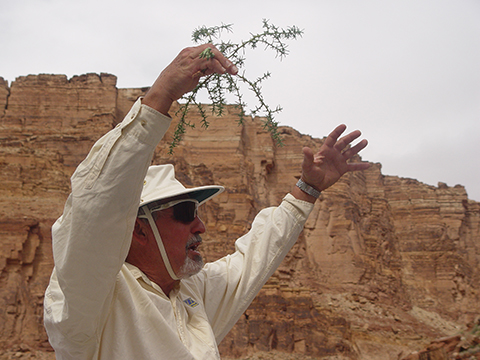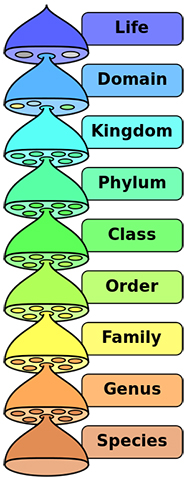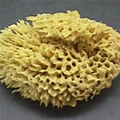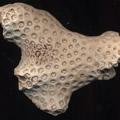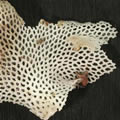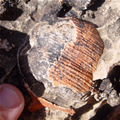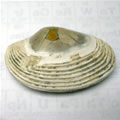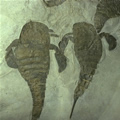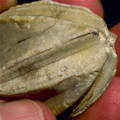Part A
Life As We Know It
There are over a million different life forms known to exist on Earth. How can we sort them all out?
|
Figure 6-2. Animals and plants are among Earth's many life forms. Ron the biologist (a member of Homo sapiens) with a Grand Canyon rattlesnake (left) and Russian thistle (right). |
|
Taxonomy
In the 18th century, Carl Linnaeus developed a hierarchical taxonomic system to classify life forms (naming and classifying life forms is called taxonomy). The Linnaean System has been modified through the years, but is still widely used today. In this hierarchical system, organisms are classified mostly by their morphology (shape, structure, etc.), and larger groups are subdivided into progressively smaller groups:
Domain > Kingdom > Phylum > Class > Order > Family > Genus > Species
Figure 6-3 shows how humans are classified.
|
Domain - Eukarya
Kingdom - Animalia
Phylum - Chordata
Class - Mammalia
Order - Primates
Family - Hominidae
Genus - Homo
Species - sapiens |
|
|
Figure 6-3. How we organize life. In general (left) and specifically for humans (right). |
|
Domain
The largest grouping is the Domain. All life falls into one of three Domains: Archaea, Bacteria, or Eukarya. For example, humans are part of the Domain Eukarya, simply because the cells in our bodies have nuclei.
Archaea
> Domain Archaea are organisms that can adapt to extreme conditions (extremophiles). These single-celled micro-organisms lack membrane-bound nuclei.
Bacteria
> Domain Bacteria includes cyanobacteria (photosynthetic) and other bacteria. These single-celled micro-organisms lack membrane-bound nuclei.
Eukarya (or Eukaryota)
> Domain Eukarya are relatively more advanced, micro- to macroscopic organisms that have membrane-bound nuclei.
Kingdom
The next smaller grouping is the Kingdom. For example, Domain Eukarya is composed of several smaller Kingdoms.
Plantae
> Kingdom Plantae includes eukaryotic organisms that are mainly multicellular and dominantly photosynthetic. Includes green algae and land plants.
Fungi
> Kingdom Fungi includes eukaryotic unicellular to multicellular organisms that live by decomposing and absorbing the organic material in which they grow. Includes mushrooms, yeast, molds, etc.
Animalia
> Kingdom Animalia includes eukaryotic multicellular organisms that consume energy-releasing food substances, have mobility afforded by muscles and senses, and reproduce sexually. Includes humans, insects, sponges, etc.
Protista
> Kingdom Protista is a diverse group of mostly unicellular microorganisms without specialized organs and includes all eukaryotic organisms that are not plants, fungi, or animals. Includes amoebae, diatoms, paramecia, etc.
Organisms from the Archaea and Eubacteria domains are important, but our focus in this lab is on members of Domain Eukaryota, specifically those in Kingdom Animalia. And although there is an immense variety of different fossil types that represent Kingdom Animalia, we will focus on a few of the more common Phyla. Before proceeding to the identification phase in Part C, let's review some of the fossil phyla that are important in paleontology.
Description of Important Fossil Phyla
Some animals possess a nerve chord (Phylum Chordata) and supporting bone structure (vertebrates), whereas others are made of durable hard shells or exoskeletons (invertebrates). Fossilization typically favors the preservation of marine organisms, which are sheltered from surficial weathering and erosional processes, especially those with hard body parts. Thus, much of beginning-level paleontology focuses on invertebrate marine fossils, like corals, snails, trilobites, clam shells, etc. Descriptions of some of these important marine invertebrate fossils follows. Before continuing, we will now review information in a few very helpful reference handouts, which include information about different fossil types, lots of scale drawings, and geologic age range diagrams.
|
Table 1. Phyla of Kingdom Animalia. PDF information courtesy of Poort and Carlson (1998). |
|
* IMPORTANT *
Use the PDF links above to print hard-copy versions of the fossil decription handouts for use in this lab and the lab quiz.
Refer to the Fossil reference PDFs to answer the following questions.
![]()
![]()
![]()
![]()
![]()

